Nature Now! Christmas Fern
For immediate release ‐ December 18, 2020
Nature Now
Contact: Jessica Wackes, 919.707.9850. Images available upon request
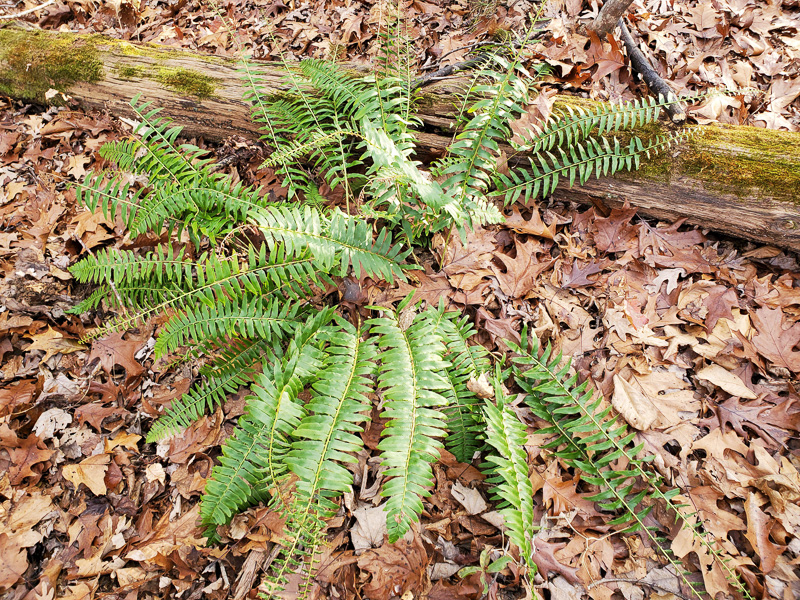
Christmas Fern (Polystichum acrostichoides) is a wonderful fern to enjoy during the Christmas holiday season. It is a common fern found in much of eastern North America. It loves the moist shaded slopes of woodlands, particularly along streams. It is one of our few evergreen ferns, making it easy to find and identify in the winter. If you find a large fern in a North Carolina forest during the winter season, it is almost certainly a Christmas Fern. Being so prominent during the Christmas season is why they are called Christmas Ferns.
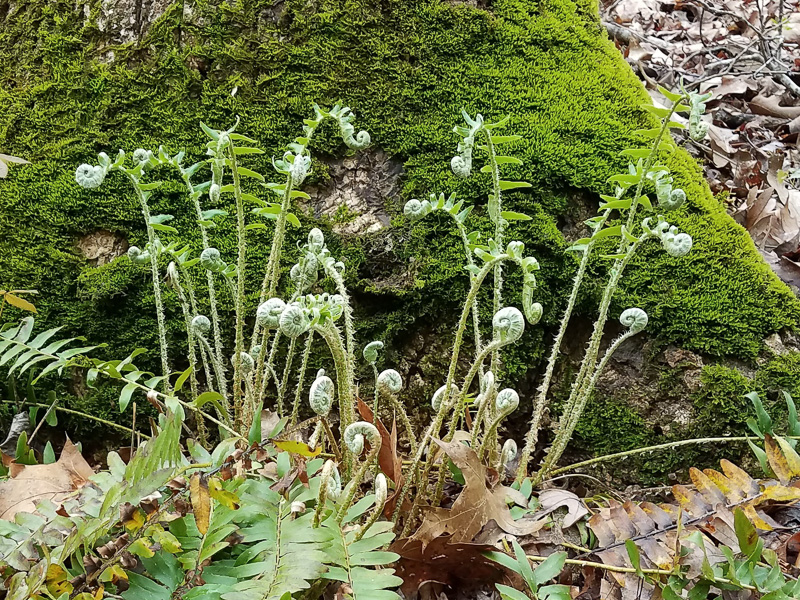
The Christmas Fern is a member of a large group of ferns called Shield Ferns (Polystichum) with about 500 species worldwide. Polystichum is one of the ten largest fern genera known and is remarkable for its worldwide occurrence. Of the 100+ fern species in North Carolina, the Christmas Fern is our only representative of this genus. But it does occur throughout most of the state, so everyone can enjoy this gift all year long.
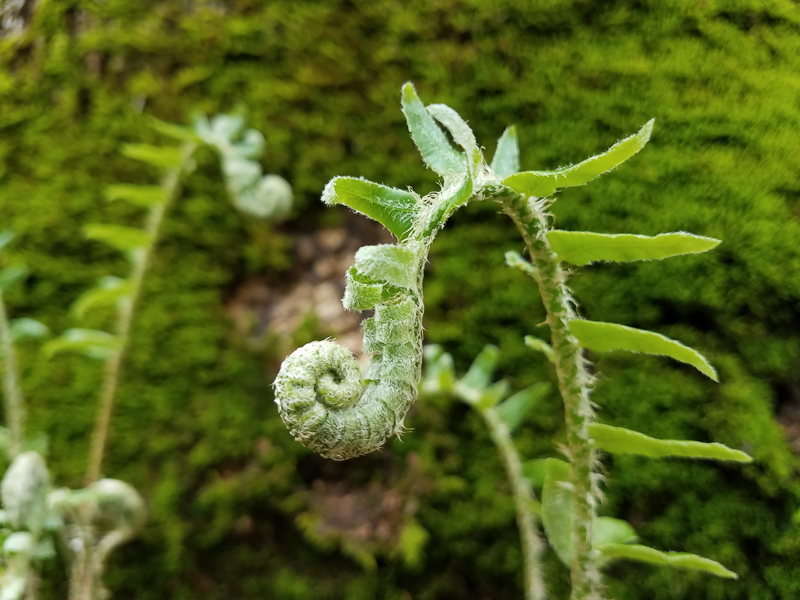
Christmas Ferns send up new leaves called fronds from a central rhizome in the spring. The emerging fronds are called fiddleheads because of their violin head resemblance. Packed into the fiddlehead is a whole fern frond that slowly unfurls as it grows to full leaf. In the case of the Christmas Fern, these fronds are pinnate. This means that there is a central leaf stalk with leaflets attached along two sides of the stalk.
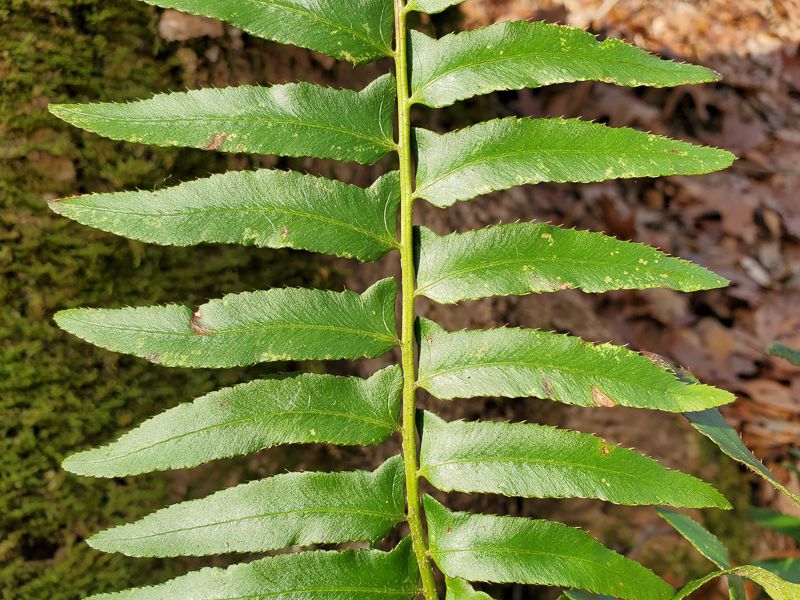
Christmas ferns have one more Christmas-related feature that makes it easy to distinguish them from other ferns. Each leaflet has a small lobe at its base, making the leaflet look like a Christmas stocking!

Among the new fronds in the spring will be fertile fronds for reproduction. Ferns are more primitive than our flowering vascular plants. They reproduce by producing spores instead of seed-bearing fruits that are produced by flowering plants. The fertile fronds of Christmas Ferns have sori (groups of spore-producing sporangia) on the underside of the terminal leaflets of the fronds. Sori are usually brown in color and are easy to see on the Christmas Fern. The fertile part of the frond withers away in the winter. The fronds that we enjoy in the winter are non-fertile fronds and remnants of the fertile fronds.
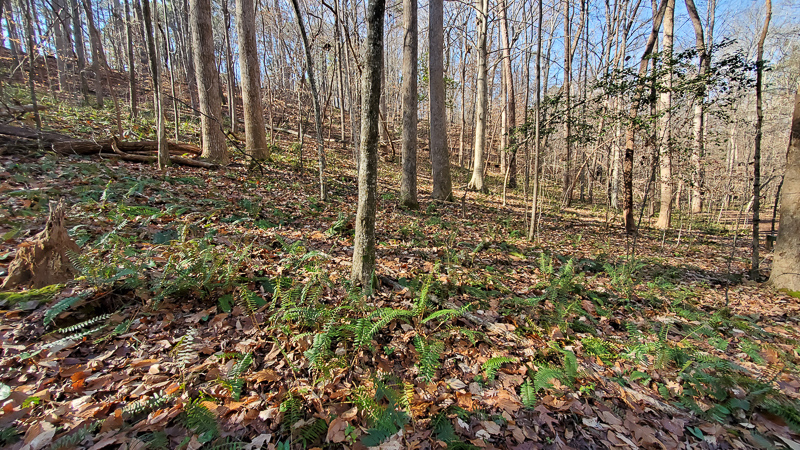
I hope that you can visit a natural area during the Christmas season to enjoy some of nature’s winter decorations. A great place to see Christmas Ferns in Wake County is Hemlock Bluffs Nature Preserve in Cary. Take the Swift Creek loop trail and you will find the forest slopes and floodplain well decorated with thousands of Christmas Ferns. While there, be sure to check out the Eastern Hemlock Trees along the bluffs of Swift Creek and learn why this population of evergreen trees is so far from its normal mountain home. Not saying that Santa had anything to do with it, but they sure do look like Christmas trees to me!
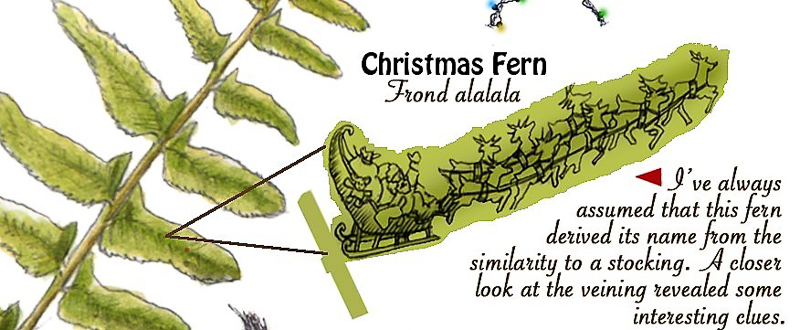 Illustration by David Williams.
Illustration by David Williams.
Best wishes to all during the holiday season!
By Jerry Reynolds, Head of Outreach

